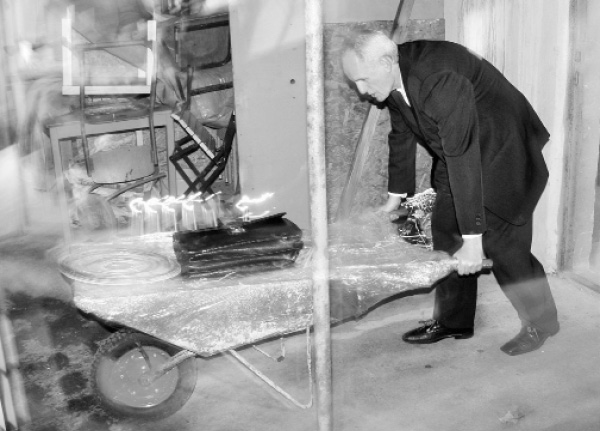
THE NAME OF THE WHITE ROSE—ROSE OF THE WHITE NAME
first performed on November 21, 2017
WL4 Gallery, Gdansk, Poland
performed once in 2017
JANUSZ PLOTA
Gdansk, Poland
079334052j079334052a079334052n079334052u079334052s079334052z079334052_079334052p079334052l079334052o079334052t079334052a079334052@079334052w079334052p079334052.079334052p079334052l079334052 079334052/079334052 079334052a079334052r079334052t079334052e079334052u079334052r079334052o079334052p079334052e079334052@079334052j079334052a079334052n079334052u079334052s079334052z079334052p079334052l079334052o079334052t079334052a079334052.079334052p079334052l
januszplota.pl / facebook.com/janusz.plota
THE NAME OF THE WHITE ROSE—ROSE OF THE WHITE NAME
JANUSZ PLOTA
“The Name of the White Rose—Rose of the White Name” refers to the current situation in my country, Poland. I performed this in Gdansk, where the idea of solidarity was born, in the city where World War II began. Today, in the place where I live, I see people who are sad, people who have lost their faith in politicians; I see people covered by the dark side of power. I protest. My last performative actions are symbolized by signs of ecological warning signals. My performative monologue and dialogue is a polemic with a man and his relationship to the world around him. My white rose, a reference to the work of Umberto Eco, is a symbol of duration—its lasting faith in another human being. The white rose, as a symbol of innocence and independence, becomes an attribute of freedom. At the end of the performance, my sculpture of the rose, together with other accessories used for the performance, burns on a wheelbarrow. Fire is commonly held as a symbol of unhappiness and destruction. In my work, it is a symbol of purification and rebirth. At the end of the performance we hear the sound of harmonic ringtones, previously extracted from a fire from a burning wheelbarrow. The sound of harmonic bells epitomizes liturgical sounds used during mass and Catholic processions in Poland. This sound used during mass can have an archetypal or transarchetypal (TAE)* meaning, but it reminds me of the domination and presence of the Catholic Church in the lives of the people of Poland.
*Transitart Europe (TAE) is a combination of two artistic attitudes: a manifest of my transit art from the period of 1992-1993 and a manifest of my archetypical art from 1994. Transitart Europe is searching, documenting, and presenting archetypical art in independent and official galleries and museums of Europe. It is a presentation of creative attitudes which combine art and archeology. Artists using a similar language of creative expression are invited to participate in joint presentations and manifests of transit art. Rotary offices, galleries, and museums are the creative exponent of TAE as a constant search for a “place” (2011-2018).